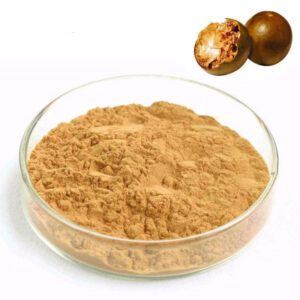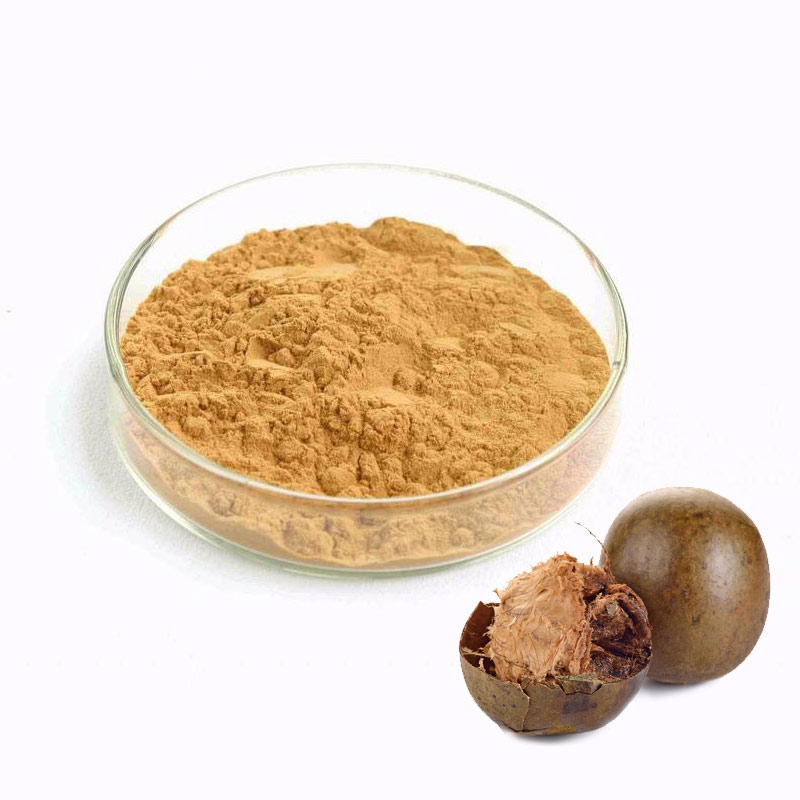Momordica grosvenori CAS:88901-36-4
-Plant extracts
1. High purity,
2.Better stability,
3.For Sweetener and medical.
Share the product
Product information

Product Attribute
| Product Name | Momordica grosvenori CAS:88901-36-4 |
| Type | Natural Flavor |
| Brand Name | BAISIFU |
| Appearance | Powder |
| Shelf Life | 2 years |
| Specification | 1L |
| MOQ | 5kg |
| Origin | Shaanxi,China |
| Purity | 99% |
| Packing | Foil bag,Bottled,Drum,Carton,Container |
| Storage | Store in cool &dry place Keep away from strong light and heat |
| Ingredients | Natural raw materials, safe and harmless, no addition |
| Certificate | SC/KOSHER/HALAL |
| use | Medicine, health products, Sweetener, etc |
| workability | Concentration, drying, purification, etc |
Introduction
Momordica grosvenori is the main sweet component in Siraitia grosvenorii.
Chemical Structure
The molecular structure of Momordica grosvenori has cucurbitane – type triterpene as the aglycone, connected to multiple glucose and rhamnose molecules through glycosidic bonds. This unique structure endows it with high sweetness and special physical and chemical properties.
Physical and Chemical Properties
Appearance: Usually white or light yellow powder.
Solubility: It is readily soluble in polar solvents such as water, methanol, and ethanol, but has low solubility in non – polar solvents.
Stability: It is relatively stable under normal temperature and pH conditions. However, under extreme conditions like strong acids, strong alkalis, or high temperatures, its structure may change, resulting in a decrease in sweetness or alteration of other properties.
Source and Extraction
Source:Mainly from fruits of Siraitia grosvenorii in Cucurbitaceae.
Extraction Method:Usually extracted by water or alcohol, then purified.
Main Uses
Sweetener: With high sweetness (300 – 400x sucrose) and low calories, used in food industry.
Medical & Health – care: Has bio – activities, applied in medical and health – care products.
Safety
Mogroside (V) is highly safe and is a natural and healthy sweetener. Research and practice show that, within normal usage limits, it causes no harm to the human body, with no teratogenic, carcinogenic, or mutagenic risks. It has been approved for use in food and medicine in many countries and regions.


